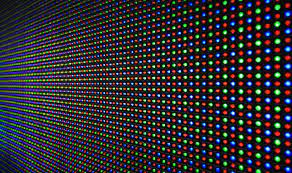From acoustics to quantum mechanics. What happens when the effect discovered by scientist and musician Ernst Chladni on acoustic vibrations is applied to quantum dots? The foundations are laid for the popular Quantum Dot Laser Technology.
Take a plate, sprinkle it with sand and place it on top of a source of acoustic waves. The sand will begin to jump and move, until it accumulates along the nodal lines of the vibration, drawing complicated and fascinating geometric figures. This effect is known as the Chladni plate, named after the musician and scientist who discovered it in the 18th century, and which made it possible to develop models that are still used today in the design and construction of acoustic instruments, such as violins, guitars, and violas.
Findings
What if this sound vibration effect could be obtained from light waves? This is the question answered by the researchers of the Naval Research Lab in Washington led by Sam Carter and who published their results in the journal Applied Physics Letters. The researchers found that there is an effect similar to that described by Chladni, who is considered the “father of acoustics”, if a thin and rigid membrane is illuminated by a laser: the membrane will vibrate in resonance with the light, just like the arc of the acoustic experiment that draws the vibrational nodes with sand. To visualize these vibrations we use quantum dots, literally quantum dots, that is tiny structures that emit light at the frequency that corresponds to that of the movement.
The study examined a semiconductor membrane just 180 nanometers thick and suspended on a solid substrate springboard. This tiny membrane includes an array of quantum dots inside, which therefore play the same role as sand in the acoustic version of the experiment, and which have a very small thickness: less than a tenth of 1% of a human hair.
Successful Experiments
The membrane was then probed with a test laser in order to visualize the resulting resonances. Quantum dots in fact absorb light and emit a second light pulse as a response to the solicitation. The pulse is then detected and forwarded to a display, where geometric structures significantly similar to those drawn by the Chladni plates are reproduced, even if the new device obtained from the quantum dots is not based on acoustic phenomena, but on purely luminous phenomena.
For example, new accelerometers could be built based precisely on the possibility of detecting and controlling the characteristic emissions of quantum dots, that is, starting from the detection of the light frequency emitted by the quantum dots and correlated to the vibration of the underlying membrane. The effect could also be used in reverse, that is, starting from the movement of the underlying membrane to control the frequency of the light emitted by the quantum dots.
The discovery of this incredible similarity between two effects driven by two completely different phenomena for Carter, author of the study, is very important and involves a great variety of technological applications, starting with the detection of the tenuous forces produced by the proximity of dense objects, such as for example shields for matter: “Hidden nuclear materials can thus be revealed since dense materials such as lead are used to shield devices”.
Final Words
In fact, the shielding of very dense materials can cause small gravitational anomalies that generate tiny movements that could, in the future, be easily detectable with new devices built following the principle discovered and described in the study. The next step of the researchers will be to insert the study of electronic spin in the devices, in order to increase their sensitivity and give life to a new class of sensors and detectors based on decidedly innovative technology.
Follow Techdee for more!~
